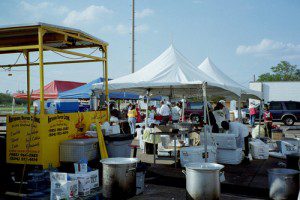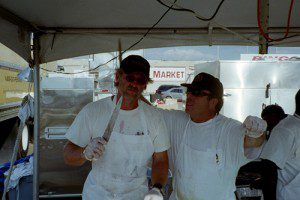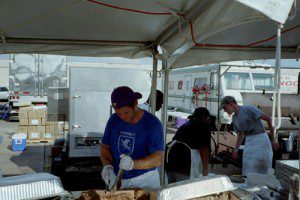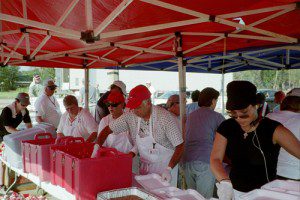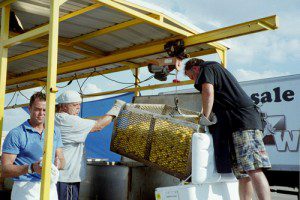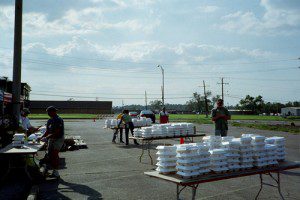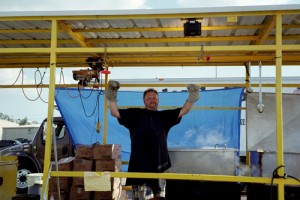Click Here to View a Slideshow of Week 1
Well, after many, many measurements, evaluations, and discussions with the original trailer company and new trailer companies, it was decided that the trailer originally purchased by R&R Rigs to create the Boiler/Grilling Trailer for the Gulf of Mexico Deepwater Horizon Oil Spill would not have the structural integrity that Rick was looking for in a trailer. After visiting a trailer company last Friday night, Rick decided to swap out the original trailer for a new trailer that did not have the roll bar around the sides of the entire trailer. Because of the Boiler/Grilling Trailer’s design, Rick would have had to cut the roll bar in several places, and he was concerned that doing this would weaken the structure and balance of the trailer.
In searching for a 20′ trailer that did not have the roll bar design, Rick was pleasantly surprised to find the product he was looking for, for the same price, but that far exceeded the original trailer in quality and durability. Not only would the new trailer have a similar design as the first Disaster Relief Boiling Rigs that were built by R&R Construction Service, BUT the new trailer is also 10 times the original trailer because it has a stronger steel structural frame, 6, 10-ply heavy duty trailer tires with sidewalls, and 2 rear outriggers.
The new trailer was delivered to the R&R Rigs’ warehouse on Monday, and Rick and his welder immediately went to work cutting the steel pieces that would be welded to create the steel structural trusses for the roof of the trailer. This steel frame also will support the 2, 24′ I-beams that will be used to support the electrical hoists. The electrical hoists will be able to transport the boiling pots’ food baskets up and down the cooking line, delivering food to the drop table at the rear of the trailer. On the side of the Boiler/Grilling Trailer that has the 2 grills and smoker, the electrical hoist on that side will transport a custom-made meat rack. The meat rack will contain aluminum sheets that can be pulled out to dump the meat on the drop table. In addition to the meat rack and cooking baskets, the electrical hoists will also be used to lift the propane tanks off of the front of the trailer so that they can be refilled. So, the steel frame and I-beam configuration is basically the framework that will support the weight of the trailer operations.
On Tuesday, the structural trusses were put together “on the floor” to make sure that all of the parts of the trusses go together and are perfectly straight and level. Then, today, Rick started erecting the trusses on the Boiler/Grilling Trailer itself. The erection of the trusses also is a very exact procedure in that they must be absolutely level with the trailer and with each other. Tomorrow (Thursday), R&R Rigs will erect the rest of the structural trusses, weld the 2, 24′ I-Beams to the steel frame, and install the galvanized metal roofing panels. This Boiler/Grilling Rig will be ready to be painted with heat resistant paint by Friday. Stay tuned to see the completed steel structural frame and roof of our trailer.
Click Here to View a Slideshow of Week 1

